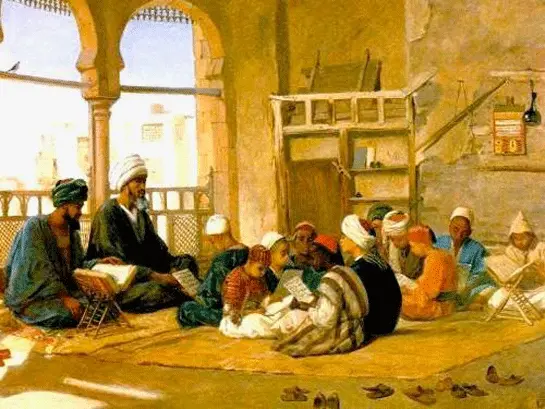Education in the Ottoman Empire was a multifaceted system that evolved significantly over the centuries. From the early days of the empire, education was deeply rooted in Islamic traditions, with primary schools known as mekteps and higher education institutions called medreses. These institutions were often attached to mosques and focused on religious studies, but they also included subjects like mathematics, astronomy, and philosophy. As the empire expanded, so did its educational system, incorporating diverse cultural and intellectual influences. This article explores the various stages and methods of education in the Ottoman Empire, shedding light on how it shaped the intellectual and cultural landscape of one of history’s most influential empires.
The Ottoman Empire ruled over a vast area from the 14th century to the 20th century, and during this period, the education system made significant contributions to the social, cultural and economic structure of society. Education in the Ottoman Empire can be examined under two main headings: religious and secular.
Basic Elements of the Ottoman Education System
The Ottoman education system was formed by the coming together of various elements. These elements are as follows:
- Madrasahs
- Primary Schools
- Darülfünun
- Primary and Secondary Education Institutions
Madrasahs
In the Ottoman Empire, madrasahs functioned as higher education institutions and generally provided education in Islamic sciences. Courses such as tafsir, hadith, fiqh, and theology were taught in madrasahs. Madrasahs were generally located in mosque complexes, where students acquired both academic knowledge and religious education.
Primary Schools
Primary schools were primary school level educational institutions that formed the basis of the Ottoman education system. In these schools, children were taught reading, writing, mathematics and religious knowledge. Primary schools were simple structures generally located in villages and towns and accepted students from all segments of society.
Darülfünun
Darülfünun is considered the first of the modern universities established during the Ottoman Empire. Founded in 1900, Darülfünun operated with the aim of providing education in both religious and secular sciences. This institution emerged as part of the Ottoman modernization efforts and was influenced by the university system in Europe.
Primary and Secondary Education Institutions
During the Ottoman period, primary education was provided through primary schools, while secondary education institutions were provided through structures such as madrasahs and darülfünun. This system was of great importance in terms of raising the level of education in society and acquiring vocational skills for individuals.
The Place of Women in Education
In the Ottoman education system, women’s education was limited by the social structure and cultural norms of society. However, in some periods, especially in the 19th century, steps were taken towards women’s education. Private schools were opened for women and some madrasahs gave lessons to women. This situation contributed to women taking a more active role in social life.
The Last Periods of the Ottoman Education System
Towards the end of the 19th century, the Ottoman education system underwent serious changes under Western influence. New educational institutions such as modern schools, technical schools and art schools were opened. This process can be considered as part of the Ottoman modernization efforts.
Education in the Ottoman Empire had a complex structure that brought together religious and secular elements. Institutions such as madrasahs, primary schools and darülfünun aimed to raise the level of education in society. However, the place of women in education and the process of modernization are important issues in terms of the transformation that the Ottoman Empire went through. The Ottoman education system was shaped by the social and cultural dynamics of the period and continued to show its effects in later periods.
Conclusion
The educational system of the Ottoman Empire played a crucial role in the development of its society and governance. By blending religious instruction with secular subjects, the Ottomans created a unique educational framework that produced scholars, administrators, and leaders who contributed to the empire’s longevity and success. The legacy of Ottoman education is evident in the modern educational institutions of Turkey and other former Ottoman territories. Understanding how education was conducted in the Ottoman Empire provides valuable insights into the empire’s enduring influence on contemporary education systems.
